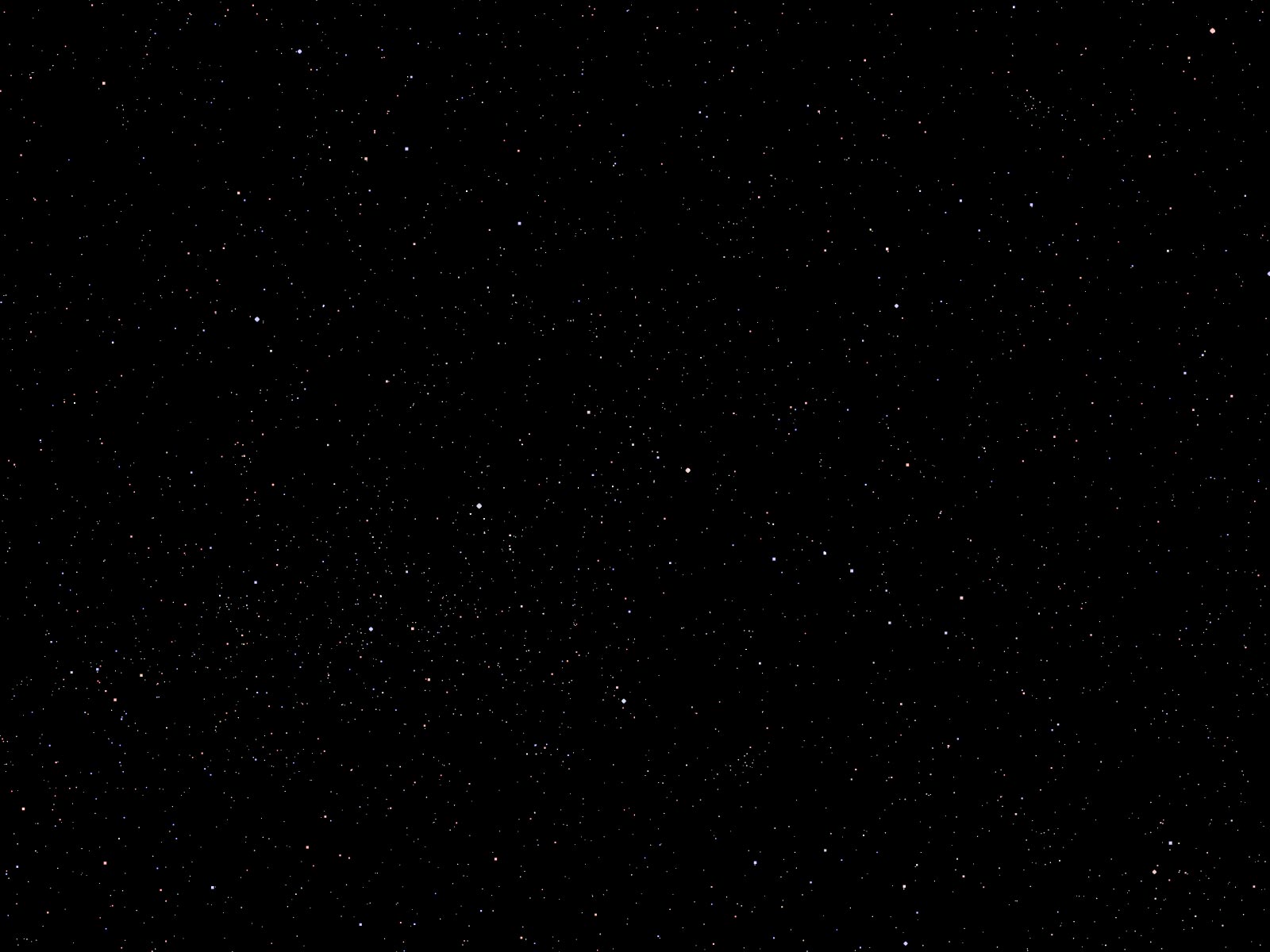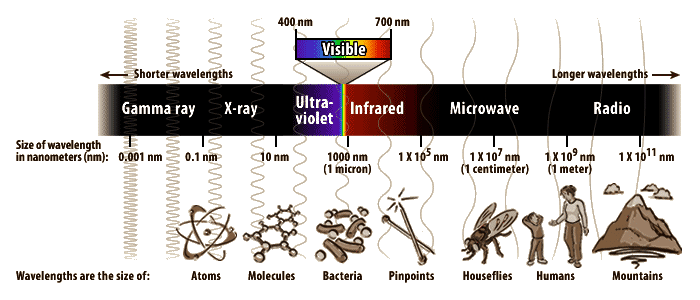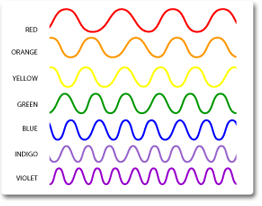


 U.Mars — Encyclopedia
U.Mars — Encyclopedia
Basic Astronomy and the Nighttime Sky
When you tune your radio, watch TV, send a text message, or pop popcorn in a microwave oven, you are using electromagnetic energy. Electromagnetic energy travels in waves and spans a broad spectrum from very long radio waves to very short gamma rays. The human eye can only detect a small portion of this spectrum — the region called visible light. A radio detects a different portion of the spectrum, and an x-ray machine uses yet another portion. Astronomers use the full range of the electromagnetic spectrum to study the Earth, the solar system, and the universe beyond.

All electromagnetic radiation is light, but we can only see a small portion of this radiation—the portion we call visible light. Cone-shaped cells in our eyes act as receivers tuned to the wavelengths in this narrow band of the spectrum. Other portions of the spectrum have wavelengths too large or too small and energetic for the biological limitations of our perception.

 As the full spectrum of visible light travels through a prism, the wavelengths separate into the colors of the rainbow because each color is a different wavelength. Violet has the shortest wavelength, at around 380 nanometers, and red has the longest wavelength, at around 700 nanometers.
As the full spectrum of visible light travels through a prism, the wavelengths separate into the colors of the rainbow because each color is a different wavelength. Violet has the shortest wavelength, at around 380 nanometers, and red has the longest wavelength, at around 700 nanometers.
Each color in a rainbow corresponds to a different wavelength of electromagnetic spectrum.
Refer to this site for information on the remaining regions of the full electromagnetic spectrum (sections on radio waves, microwaves, infrared, ultraviolet, x-rays, and gamma rays).
See also:
Thanks to:
National Aeronautics and Space Administration, Science Mission Directorate. (2010). Introduction to The Electromagnetic Spectrum. Retrieved January 12, 2014, from Mission:Science website: https://science.nasa.gov/ems/01_intro
National Aeronautics and Space Administration, Science Mission Directorate. (2010). Visible Light. Retrieved January 12, 2014, from Mission:Science website: http://science.nasa.gov/ems/09_visiblelight
Space Telescope Science Institute. (2005). Telescopes from the Ground Up. Retrieved January 12, 2014, from: http://amazing-space.stsci.edu/resources/explorations/groundup/